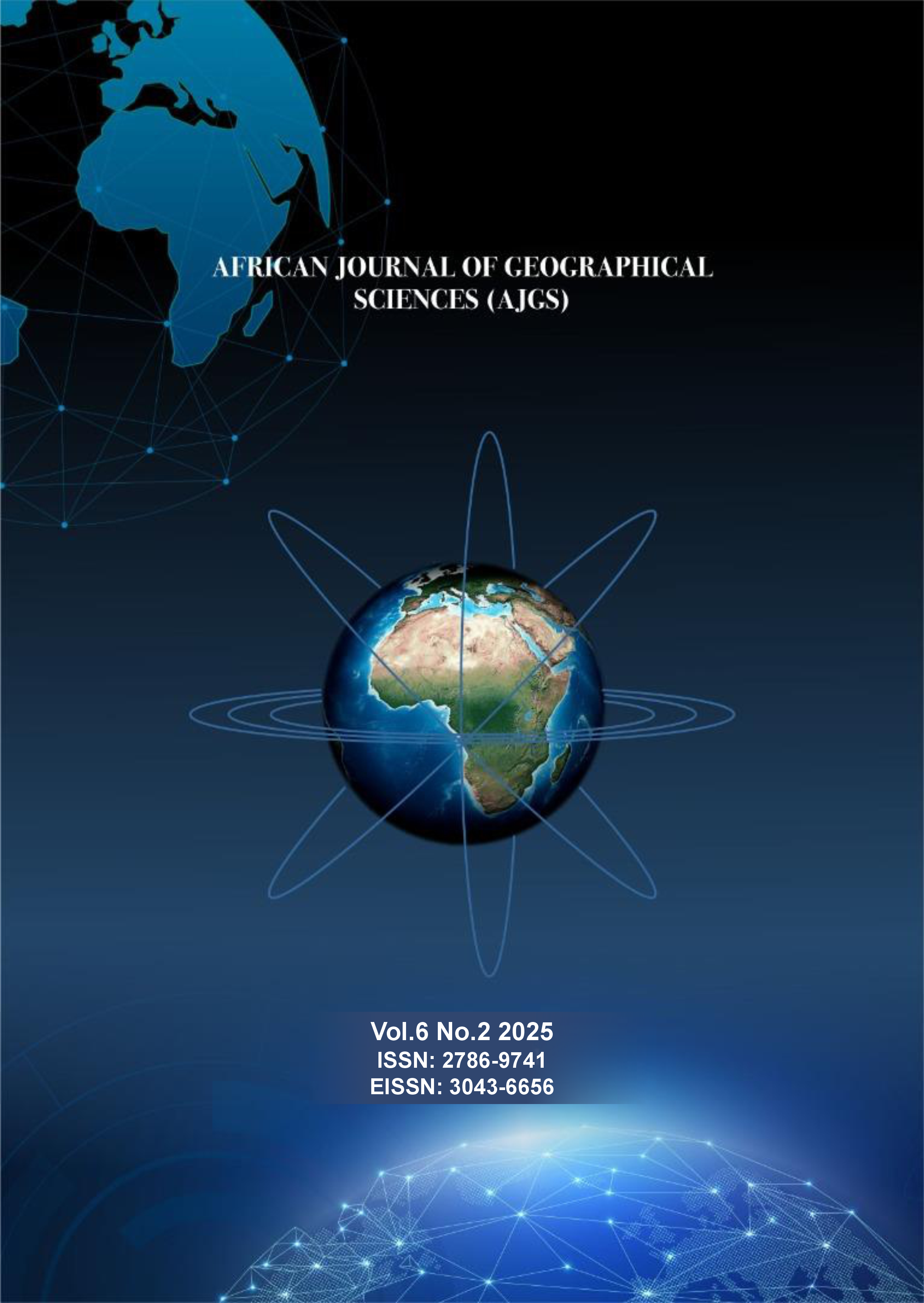CLIMATE CHANGE AND AGRARIAN RESILIENCE: AN INDEX BASED APPROACH TO RANKING CLIMATE RISKS AND RELATED HAZARDS IN SELECTED COMMUNITIES OF PLATEAU STATE
##plugins.themes.bootstrap3.article.main##
Resumo
Climate change is increasing the risk of hazards leading to not only extreme weather events but also slow onsets of temperature variations, shifts in precipitation, and changes in other features of the climate system. Climate risks have significant implications for agrarian livelihoods, food security and national development. Understanding the nature of climate risk is vital for informed decisions on risk management. This study utilized the index-based approach to rank climate risk in three communities of Shendam Riyom, and Mangu in Plateau State. Using a mixed methods sequential design with first semi-structured interviews followed by survey questionnaires, data on climate risks and related hazards was collected from 22 key informants alongside 229 questionnaires administered to farmers who provided information on the experiences of climate risk events within their environment. Content analysis was used to analyse information elicited from the semi-structured interviews whilst descriptive statistics of ranking used to ascertain the climate risk index computing the frequency of occurrence against the magnitude of impact of climate hazard events in the communities. Findings reveal that flood (0.81), Changing rainfall pattern (0.41), and water shortages (0.36) ranked the highest. The study further showed that seasonal experiences varied as drier conditions of stream-flow changes, warmer temperatures, less rain days and late onset of rains were dry season related risks. While heavier rains and destructive winds are high risk events of the wet season. Also, community experiences differed across the three selected locations, also. The study recommends a development of comprehensive climate risk assessments and mapping in order to improve the preparedness and contingency plans for climate change.
##plugins.themes.bootstrap3.article.details##
Referências
Ainsworth, E. A., & Long, S. P. (2021). 30 years of free‐air carbon dioxide enrichment (FACE): What have we learned about future crop productivity and its potential for adaptation? Global change biology, 27(1), 27-49.
Batibeniz, F., Hauser, M., & Seneviratne, S. I. (2023). Countries most exposed to individual and concurrent extremes and near-permanent extreme conditions at different global warming levels. Earth System Dynamics, 14(2), 485-505.
Birkmann, J., Jamshed, A., McMillan, J. M., Feldmeyer, D., Totin, E., Solecki, W., & Alegría, A. (2022). Understanding human vulnerability to climate change: A global perspective on index validation for adaptation planning. Science of the Total Environment, 803, 150065.
Chaudhary, M. T., & Piracha, A. (2021). Natural disasters—origins, impacts, management. Encyclopedia, 1(4), 1101-1131.
Choffines, E. R., Hamburg, M. A., Relman, D. A., & Mack, A. (2008). Global Climate Change and Extreme Weather Events:: Understanding the Contributions to Infectious Disease Emergence: Workshop Summary. Washington, D.C.: National Academies Press.
Cutter, S. L., Ash, K. D., & Emrich, C. T. (2014). The geographies of community disaster resilience. Global Environmental Change, 29, 65-77.
De Angeli, S., Malamud, B. D., Rossi, L., Taylor, F. E., Trasforini, E., & Rudari, R. (2022). A multi-hazard framework for spatial-temporal impact analysis. International Journal of Disaster Risk Reduction, 73, 102829
Fotso‐Nguemo, T. C., Weber, T., Diedhiou, A., Chouto, S., Vondou, D. A., Rechid, D., & Jacob, D. (2023). Projected impact of increased global warming on heat stress and exposed population over Africa. Earth's Future, 11(1), e2022EF003268.
Garvey, P. R. (2008). Analytical methods for risk management: A systems engineering perspective: Chapman and Hall/CRC.
Hui-Min, L. I., Xue-Chun, W. A. N. G., Xiao-Fan, Z. H. A. O., & Ye, Q. I. (2021). Understanding systemic risk induced by climate change. Advances in Climate Change Research, 12(3), 384-394.
Intergovernmental Panel on Climate Change. (2013). Summary for policy makers. In: Climate change 2013: The physical Science Basis. Contribution of Working Group I to the Fifth Assesment Report of the Intergovernmental Panel on Climate Chnage. Retrieved from Geneva:
Jones, M. W., Abatzoglou, J. T., Veraverbeke, S., Andela, N., Lasslop, G., Forkel, M., ... & Le Quéré, C. (2022). Global and regional trends and drivers of fire under climate change. Reviews of Geophysics, 60(3), e2020RG000726.
Labeyrie, V., Renard, D., Aumeeruddy-Thomas, Y., Benyei, P., Caillon, S., Calvet-Mir, L., & Reyes-García, V. (2021). The role of crop diversity in climate change adaptation: Insights from local observations to inform decision making in agriculture. Current Opinion in Environmental Sustainability, 51, 15-23.
Lesk, C., Anderson, W., Rigden, A., Coast, O., Jägermeyr, J., McDermid, S., & Konar, M. (2022). Compound heat and moisture extreme impacts on global crop yields under climate change. Nature Reviews Earth & Environment, 3(12), 872-889.
Mahdjoubi, L., Hawas, S., Fitton, R., Dewidar, K., Nagy, G., Marshall, A., . . . Abdelhady, E. (2017). A guide for monitoring the effects of climate change on heritage building materials and elements. Retrieved from http://eprints.uwe.ac.uk
Rounce, D. R., Hock, R., Maussion, F., Hugonnet, R., Kochtitzky, W., Huss, M., & McNabb, R. W. (2023). Global glacier change in the 21st century: Every increase in temperature matters. Science, 379(6627), 78-83.
Stern, D. I., & Kaufmann, R. K. (2014). Anthropogenic and natural causes of climate change. Climatic Change, 122(1-2), 257-269.
Smith, K., Fearnley, C. J., Dixon, D., Bird, D. K., & Kelman, I. (2023). Environmental hazards: assessing risk and reducing disaster. Routledge.
Turner, B. L., Kasperson, R. E., Matson, P. A., McCarthy, J. J., Corell, R. W., Christensen, L., Martello, M. L. (2003). A framework for vulnerability analysis in sustainability science. Proceedings of the National Academy of Sciences, 100(14), 8074-8079.
